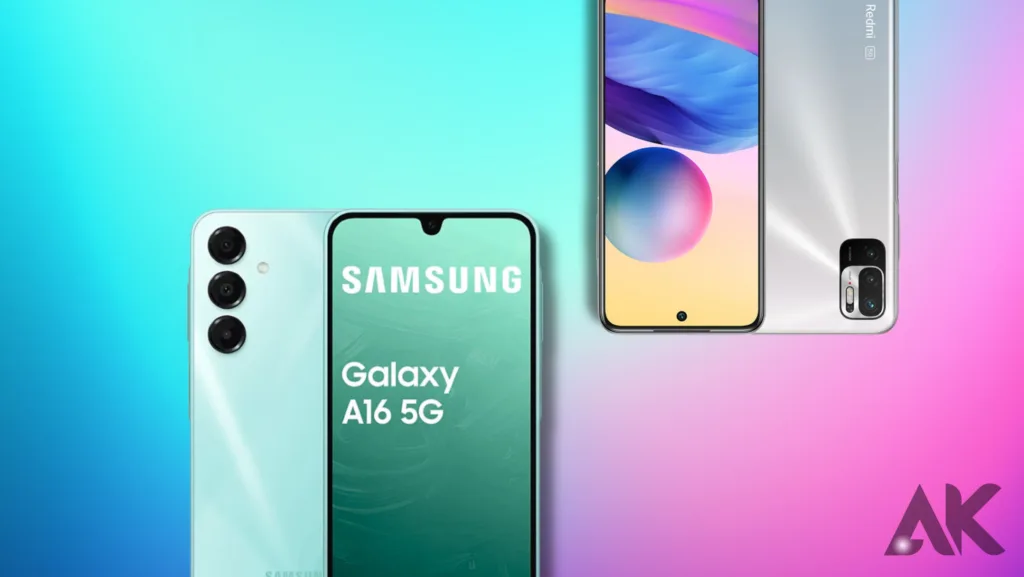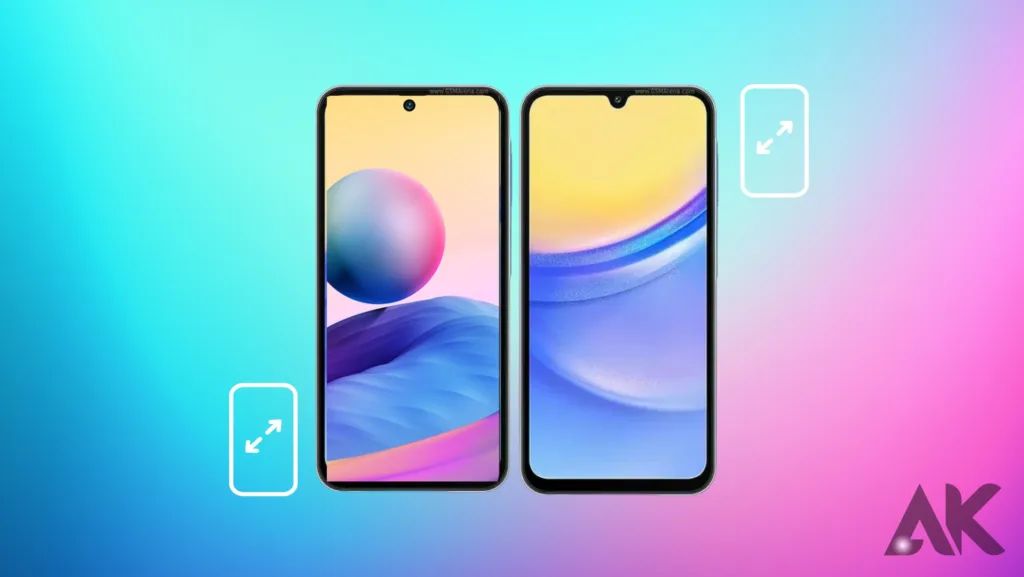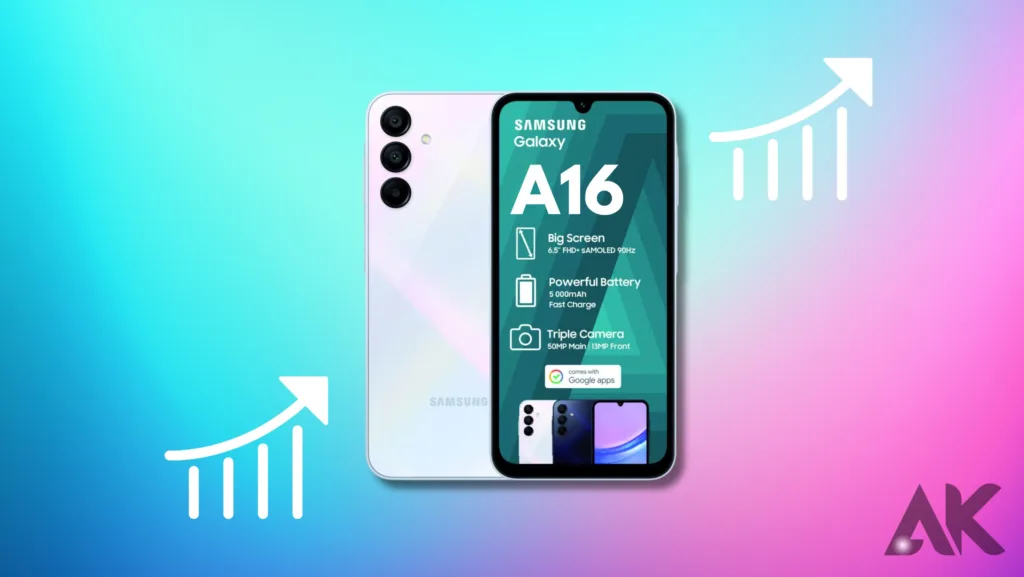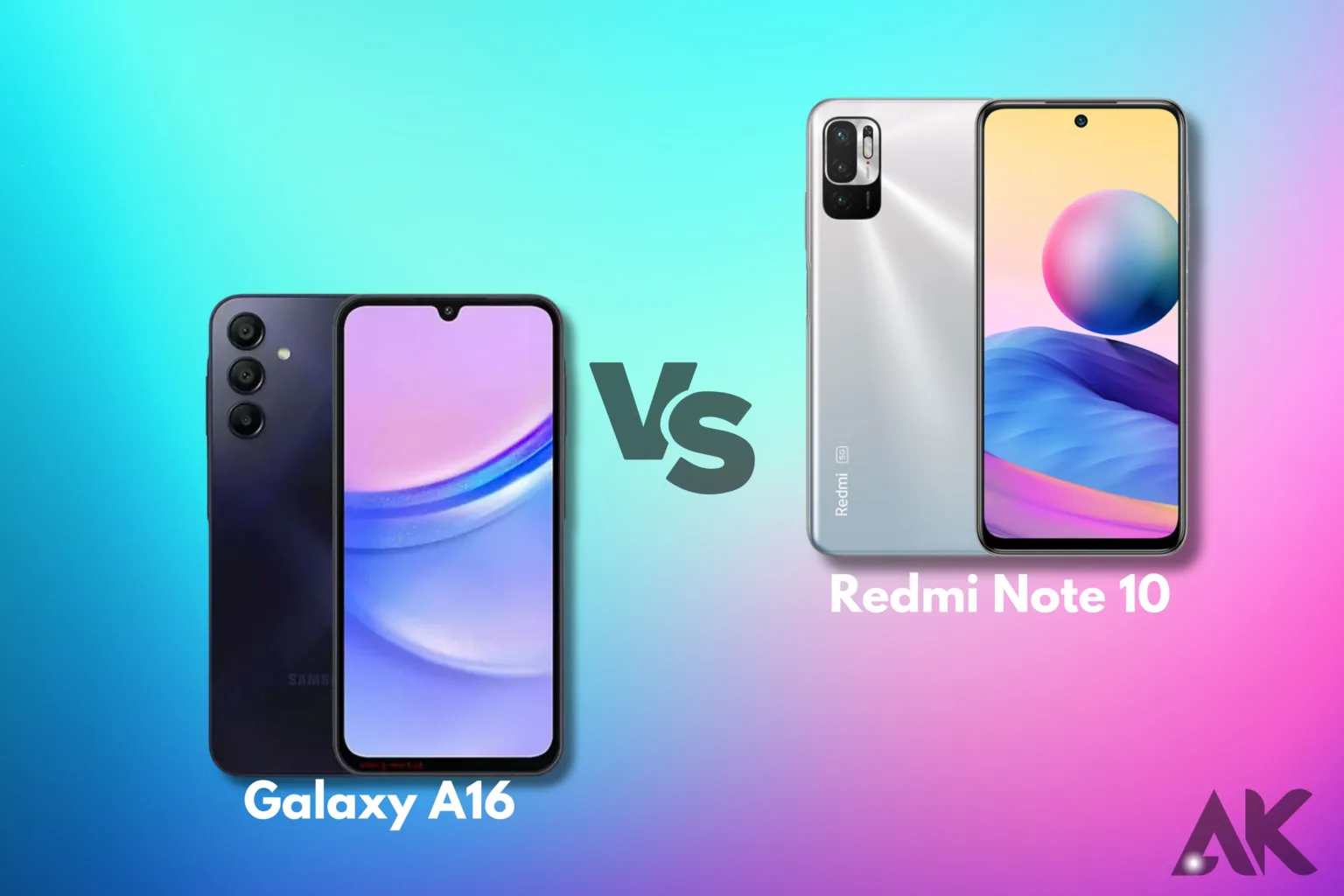Galaxy A16 vs Redmi Note 10 The Samsung Galaxy A16 and the Redmi Note 10 are two well-known brands of inexpensive smartphones. Because they offer decent functionality without going over price, both phones are attractive choices for people searching for a dependable device. Samsung’s renowned brand quality is available on the Galaxy A16, which prioritizes software that is easy to use and strong.
On the other hand, the Redmi Note 10 is well known for providing a strong feature set at an affordable price, in addition to a superior display and powerful performance. In this comparison, we’ll look more closely at both phones to help you decide which is the greatest value. Whether overall performance, camera quality, or battery life are your top concerns, this guide will help you sort through the key differences and make an informed decision.
Design and Build Quality

| Feature | Galaxy A16 | Redmi Note 10 |
|---|---|---|
| Material | Plastic back and frame | Glass front, plastic back |
| Weight | Lightweight | Slightly heavier |
| Dimensions | Slim profile | Slim but slightly bulkier |
| Color Options | Limited, often basic colors | Variety of vibrant colors |
| Design Style | Modern and minimalist | Stylish with curved edges |
| Durability | Average durability | Good durability with Gorilla Glass 3 |
| Ergonomics | Comfortable in hand | Comfortable with good grip |
Display Comparison

| Feature | Galaxy A16 | Redmi Note 10 |
|---|---|---|
| Display Type | LCD | Super AMOLED |
| Screen Size | 6.5 inches | 6.43 inches |
| Resolution | HD+ (1600 x 720) | FHD+ (2400 x 1080) |
| Refresh Rate | Standard 60Hz | 90Hz |
| Brightness | Average brightness | Higher peak brightness |
| Color Accuracy | Good, but less vibrant | Excellent color reproduction |
| Viewing Angles | Average | Wide viewing angles |
Performance and Software

| Feature | Galaxy A16 | Redmi Note 10 |
|---|---|---|
| Processor | Exynos (specific model varies) | Snapdragon 678 |
| RAM Options | 4GB/6GB | 4GB/6GB/8GB |
| Storage Options | 64GB/128GB | 64GB/128GB |
| Software | One UI (Android version varies) | MIUI (Android 11/12) |
| User Interface | Clean and user-friendly | Customizable with various themes |
| Performance | Good for everyday tasks | Strong performance for multitasking and gaming |
| Software Updates | Regular updates | Good track record for updates |
Camera Quality Galaxy A16 vs Redmi Note 10
| Feature | Galaxy A16 | Redmi Note 10 |
|---|---|---|
| Rear Camera Setup | Dual: 50 MP + 2 MP | Quad: 48 MP + 8 MP + 2 MP + 2 MP |
| Front Camera | 8 MP | 13 MP |
| Main Camera Features | LED flash, HDR | LED flash, HDR, Night mode |
| Video Recording | Up to 1080p at 30fps | Up to 1080p at 30fps |
| Camera Performance | Good for basic photography | Excellent, versatile capabilities |
| Low Light Performance | Average | Good with Night mode |
Battery Life and Charging
| Feature | Galaxy A16 | Redmi Note 10 |
|---|---|---|
| Battery Capacity | 5000 mAh | 5000 mAh |
| Charging Speed | 15W fast charging | 33W fast charging |
| Battery Life | Good, lasts a full day | Excellent, lasts over a day |
| Charging Port | USB Type-C | USB Type-C |
| Reverse Charging | No | No |
Storage and Connectivity
| Feature | Galaxy A16 | Redmi Note 10 |
|---|---|---|
| Storage Options | 64GB/128GB | 64GB/128GB/256GB |
| Expandable Storage | Yes, microSD support (up to 1TB) | Yes, microSD support (up to 512GB) |
| RAM Options | 4GB/6GB | 4GB/6GB/8GB |
| 5G Support | No | No |
| Wi-Fi | Wi-Fi 802.11 a/b/g/n | Wi-Fi 802.11 a/b/g/n/ac |
| Bluetooth Version | Bluetooth 5.0 | Bluetooth 5.0 |
| NFC | Depends on model | No |
Conclusion
The Redmi Note 10 and the Galaxy A16 are both inexpensive smartphones with similar value, albeit with significantly different target audiences. The Galaxy A16’s elegant appearance, robust build quality, and intuitive UI make it a great choice for consumers who appreciate usability and brand loyalty. However, because of its vibrant display, powerful performance, and enhanced camera features, the Redmi Note 10 can appeal to people who enjoy shooting photos and watching media.
In the end, the best choice ultimately depends on your individual preferences for particular features. For individuals in search of a dependable and simplistic phone, the Galaxy A16 can be the ideal choice. On the other hand, if you’re looking for a device that offers more in terms of display and camera performance, the Redmi Note 10 might be a better choice. Consider your preferences and needs while making a decision.
FAQ
Q1: Which phone’s screen is better?
The Super AMOLED display on the Redmi Note 10 has a higher resolution (FHD+) than the LCD on the Galaxy A16 (HD+), which improves clarity and brilliant colours.
Q2: How are they comparable cameras?
The Galaxy A16 features a dual-camera system with a 50 MP primary sensor, whereas the Redmi Note 10 has a quad-camera system with a 48 MP main sensor for a more flexible camera layout. Additionally, the Redmi Note 10 functions better in dimly lit environments.
Q3: How long does the battery last?
Both phones feature 5000 mAh batteries, but the Redmi Note 10 may charge more quickly because it supports faster charging (33W) than the Galaxy A16 (15W).
Q4: Is storage expandable?
Yes, both phones enable microSD cards for additional storage, although the Redmi Note 10 has a higher capacity (up to 512GB) than the Galaxy A16 (up to 1TB).
Q5: What phone is best for playing games?
Because of its Snapdragon CPU, which outperforms the Exynos chip in the Galaxy A16 in terms of performance, the Redmi Note 10 is generally a better gaming device.

